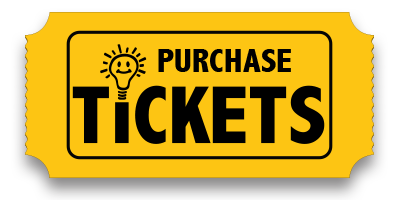Have a Ball!
Do you have a ball or two at home? Then this day is for you! Gather up all the balls you have (or make a few) for some fun activities! These activities include things that will help your child develop fine and gross motor skills, problem-solving and engineering skills, and can help them engage in cooperative play, while fostering creativity and perseverance. Each theme also comes with recommended literature and movie connections. Feel free to throw in your own activities that might relate, and don’t forget to post your results to social media and tag @discoverymuse to share with everyone else!
Art Activity/Fine Motor Activity – Paint with a Ball
For this activity, you’ll need to collect some small balls, paint, paper, paintbrush (optional) and a small tray or box.
Directions:
- Place your paper on the tray/box.
- Plop a few paint blobs on the paper.
- Add the ball to the box and gently lift the box corners, causing the ball to roll about. Continue carefully moving the box to roll the ball back and forth, up and down, transferring the paint to the paper.
- Pick up the ball and paint the ball itself, globbing the paint on. Place the painted ball back into the tray/box and continue painting.
- Try different size balls, balls with texture or smooth balls, balls that have different weights., multiple balls at the same time.
- Wash or wipe the paint off the balls.
- After letting your paper dry, add a message to the back and send it to a friend, cut it into small strips to use as bookmarks or use it in another art project.
Science Experiment – Which Ball Bounces Highest?
Experiment with the bounciness of your balls! This experiment can be as exact and official as you want it to be.
Materials:
- Balls of different sizes and purposes (basketball, soccer ball, tennis ball, golf ball, baseball, rubber ball, etc)
- Air pump (if necessary to pump up deflated balls)
- Ruler or tape measure
- Table
Directions:
- Collect the balls you will be using for this experiment.
- Lean your ruler or tape measure against the table, with the smaller numbers closer to the ground. It may be easier to have another person observe the height of the bounce while you push the ball.
- Make a hypothesis (a guess) about which ball will bounce the highest.
- Place the first ball you plan to test at the very edge of the table.
- Gently tip the ball off the table. (Don’t roll it or you can change the outcome!)
- Observe the height of the bounce. Record the height. Scientists typically use the metric system to record their data but use whatever measurements with which you feel comfortable.
- Repeat experiment with the remaining balls. For best results, additional trials for each ball are recommended (to account for any anomalies and to be sure the first wasn’t a fluke).
- (For those who are keeping track, the Independent Variable (the thing you change) is the type of ball you are using. The Dependent Variable (what you measure) is the height it bounced.)
- Review your results. Was your hypothesis correct? Which balls bounced the highest? Which bounced the least? Why do you think this occurred?
Physical Activity – Bowling
Get some of those wiggles out while learning a little about bowling, underhand throwing, and work on arm strength and aim (and maybe a little math!).
The earliest form of bowling has been traced back to ancient Egypt, around 5,000 BC!* The basic goal was to roll stones at objects and knock them down. Which is exactly what we’re going to do today!
Collect a handful of objects to be knocked down. Modern bowling is typically done with 10 pins. They can be big or small, but should all be approximately the same size. Traditional pins are a little more than 3 lbs and 15 inches tall, but anything you find works. Find a ball that can easily knock down the pins, weight-wise, and is approximately ⅔ the size of the pins.
Place the “pins” in a triangular shape on the ground with one in the first row, two in the second row, three in the third row, and four in the fourth row.
Step a few feet back from the first row and roll the ball, using an underhand motion, toward the pins. In bowling, the player has two tries to knock all the pins down. If all the pins are knocked down in the first roll, this is counted as a “Strike.” If all the pins are knocked down in the second roll this is called a “Spare.” Three strikes in a row is called a “Turkey!” Practice counting and adding – one point per pin knocked down! Traditional scoring for bowling is complex, but for a fun math lesson, read on.
- Strike: When all ten pins are knocked down on the first roll (marked “X” on the scoresheet), the frame receives ten pins plus a bonus of pinfall on the next two rolls (not necessarily the next two frames). A strike in the tenth (final) frame receives two extra rolls for bonus pins.
- Spare: When a second roll of a frame is needed to knock down all ten pins (marked “/” on the scoresheet), the frame receives ten pins plus a bonus of pinfall in the next roll (not necessarily the next frame). A spare in the first two rolls in the tenth (final) frame receives a third roll for bonus pins.
*Additional fun facts – objects found in an Egyptian child’s grave from around 5000 BC included crude objects resembling that of bowling. King Edward III outlawed bowling in 1366 AD because his troops were too distracted by it to practice their archery skills! Bocce has similar beginnings. The first mention in American Literature is in Rip Van Winkle, and the first permanent location for lawn bowling was in New York City. The small plot there is still called “Bowling Green.”
Conversation Starters and Research Questions
- What is your favorite sport involving balls?
- Do you know what other cultures’ sports involve balls? Cricket, Lapta, Pesäpallo, Korfball, Jorkyball, Biribol, Sepak Takraw are just a few we suggest you look up!
- Do you prefer to throw, hit, kick or bounce balls? Why?
- If you could invent a game involving a ball, what would you invent? Come up with rules, combine different elements of various sports, decide how scores will be given, and how winners are determined.
Videos and Websites
Movie/Literature Connection:
Because we know you’re stuck at home with limited access to movies and books, we tried to compile a list that connects to today’s theme that you might already have in your collection or be able to access online. These include:
Movies:
- The Sandlot
- Kicking and Screaming
- Bend it Like Beckham
- Space Jam
- Airbud
- Angels in the Outfield
- Mighty Ducks
- Little Giants
- Rookie of the Year
Books:
- The Babe and I by David A. Adler
- Stealing Home by Robert Burleigh
- Players in Pigtails by Shana Corey
- Salt in His Shoes by Deloris Jordan
- Basketball Belles by Sue Macy
- Pele, King of Soccer by Monica Brown
- Pete the Cat: Play Ball by James Dean
- The Berenstein Bears Go Out for the Team by Stan and Jan Berenstein
- World Cup Women by Meg Walters


